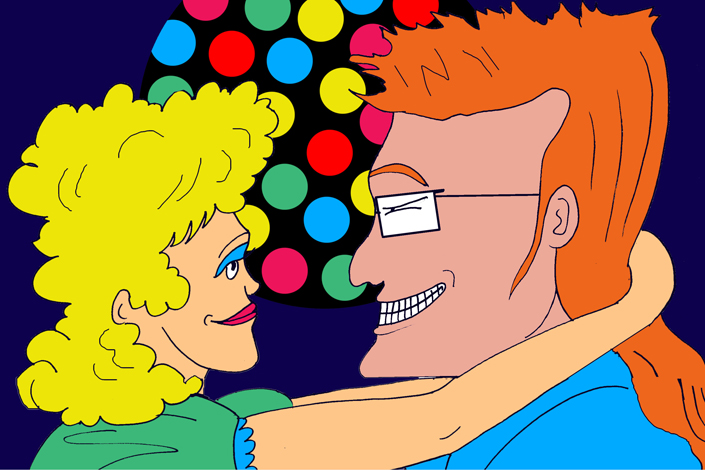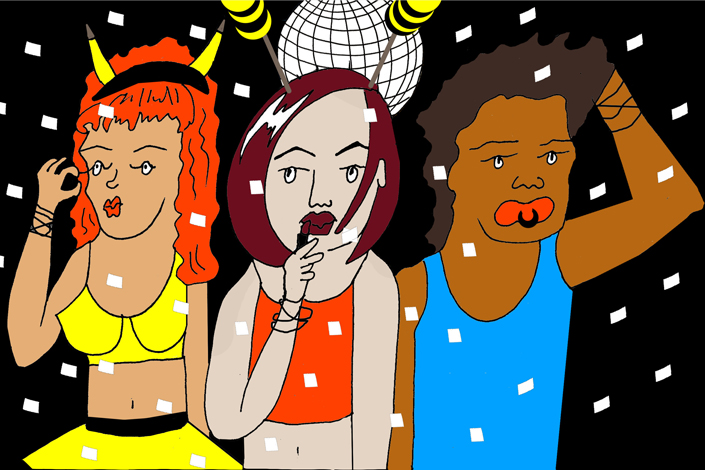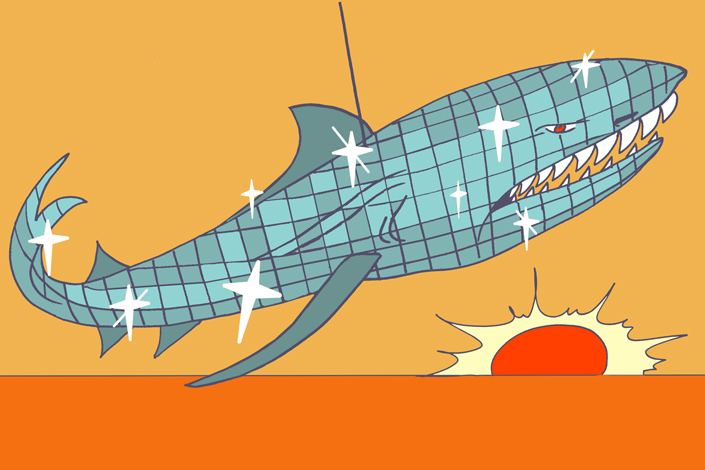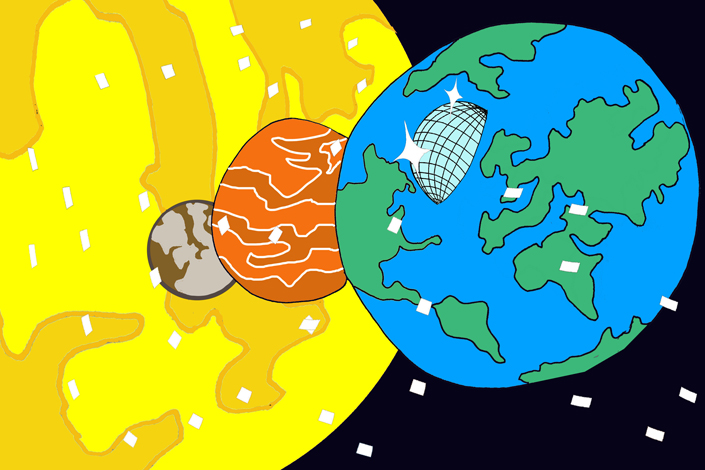The Secret History of Disco Balls
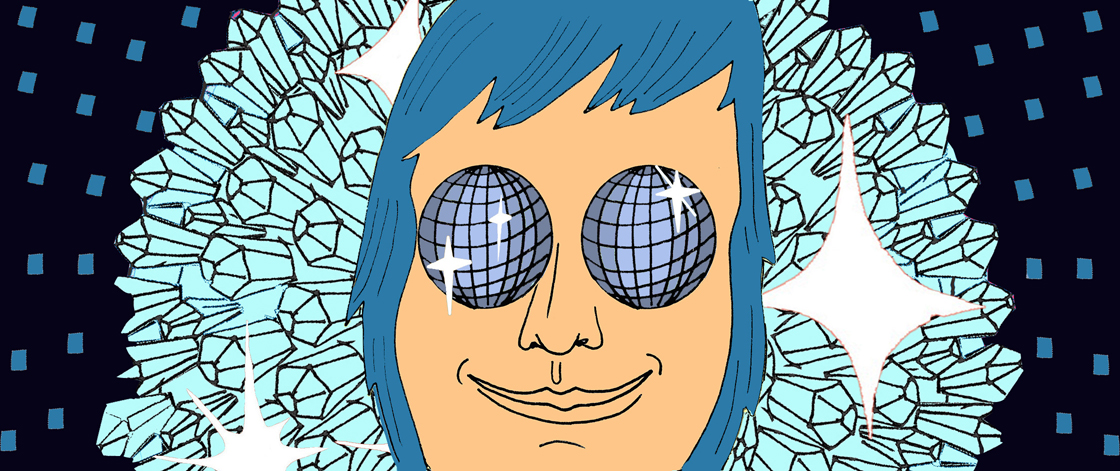
Everybody knows that if you want an instant party, you just add a disco ball. The rotating, reflecting glass spheres have been lighting up dancefloors from the age of jazz to today’s EDM era. Once considered a kitschy, disco relic, the balls are now more popular than ever. But just how did they come to be, and how have they shaped our culture over the years?
100 AD
As European furnace-blasting techniques improved during the Iron Age, iron became increasingly trendy, used in everything from hundred-gallon soup pots to stylish coats of armor. But the Greeks took it too far, sprinkling bits of iron onto their salads and even constructing the world’s first disco ball out of the stuff. It weighed four tons. At the opening of the country’s first nightclub, the venue’s manager didn’t properly suspend it from the ceiling, causing it to crash during the middle of a hot monk-chanting number. Unfortunately, dozens of people were hurt. Though the manager tried to make it up to them with free shots of ouzo, the damage was done, and dancing was banned in Greece for the next 1,800 years.
1960
Psychologist Timothy Leary famously conducted LSD studies at Harvard, helping patients beat alcoholism and achieve higher states of consciousness. But less known is Leary’s 1970 follow-up study at Pasadena City College, which used strobe lights and mirror balls to help subjects master the art of the funky chicken. Unfortunately, it just caused everyone to have seizures.
1977
Actor John Travolta launched to fame in the hit film Saturday Night Fever, in which he played a Brooklyn tough with a heart of gold who disco dances like nobody’s business. The movie is remembered for its leisure suits, light-up dancefloors, platform shoes, and disco ball. But behind the scenes, Travolta had a notoriously fraught relationship with the latter object, which he thought was trying to sabotage him by reflecting the light in a way that made him look fat. Between takes, he would swat at it with a broom, at one point breaking it open. It rained glass shards on his head and sent him to the hospital. There, light-headed and pumped full of narcotics, he began to realize just how much sense Scientology made.
1986
For years, administrators at Mankato, Minnesota’s East High School outlawed disco balls at its proms, worried they might produce unsuitably romantic settings for the impressionable youth. But during Reagan’s second term, they finally allowed a ball to be hung from the gymnasium’s ceiling for the senior prom. It softly reflected purples, reds and yellows as a mulleted DJ played the Cutting Crew and Culture Club. Nerdy math team member Barry Wormwood took advantage of the mood to ask prom queen Jenn Applebottom for a dance. She consented, despite eye-rolls and audible sighing from her popular friends. During “I Just Died in Your Arms Tonight,” he asked if he could have a kiss, and she said, “Yes, but only if you help me with pre-calc.” “Deal,” he responded. They now have six kids.
1996
Disco balls played a critical role in American electronic dance music’s first wave. Ravers in cities like Los Angeles, San Francisco and New York hung them from the rafters at secret warehouse parties, where renegade DJs played cutting-edge underground trance. Some dance music fans even began installing mirror balls in their bathrooms at home and would turn them on as they prepared their outfits to go out. Sadly, the balls did not provide much in the way of visibility, which explained sartorial choices like baggy sweatpants, JNCOs, bumble bee antennae, pacifiers and Pokémon outfits.
2006
Madonna famously employed one of the largest disco balls in history on her Confessions tour. As each show began, a ball weighing 4,000 pounds—and plated in millions of dollars’ worth of Swarovski crystals—would descend, opening to reveal Madonna herself, who proceeded to perform her song “Future Lovers/ I Feel Love.” Unfortunately, the shows usually had to be delayed to expel from the ball a 19-year-old Canadian actor named Drake, who kept hiding inside in hopes he could smooch her.
2014
In 2013, the Yuma tent debuted at Coachella, dedicated to acts that would be unfamiliar to girls wearing Nasty Gal. Last year, it welcomed a new member to the party: An eight-foot-long fiberglass shark that doubled as a disco ball. At first, Yuma tent attendance was lower than expected, and it was widely assumed that the shark had come to life and began devouring dancefloor denizens. But it turns out everyone had simply headed off to the Sahara Tent to see Fatboy Slim.
2015
This spring, innovative Los Angeles dance venue Sound Nightclub underwent a dramatic renovation. The intimate facility was reimagined as a giant sphere resembling a disco ball, featuring a pulsing, 10,000-watt exterior light display that could be seen from outer space. With DJ Sander Kleinenberg performing, the new iteration debuted a few months back. But the contraption quickly became unmoored from its hinges, toppling onto Hollywood Boulevard and rolling west. When it reached the ocean, it was dragged out by the tide, and it is now believed to be somewhere in the middle of the Pacific, perhaps a few thousand miles northeast of Papua New Guinea. Fortunately, none of the attendees seem to mind, at least as indicated by their Twitter hashtags, including #deepseahouse, #salty and #basstodafaceliterally.





